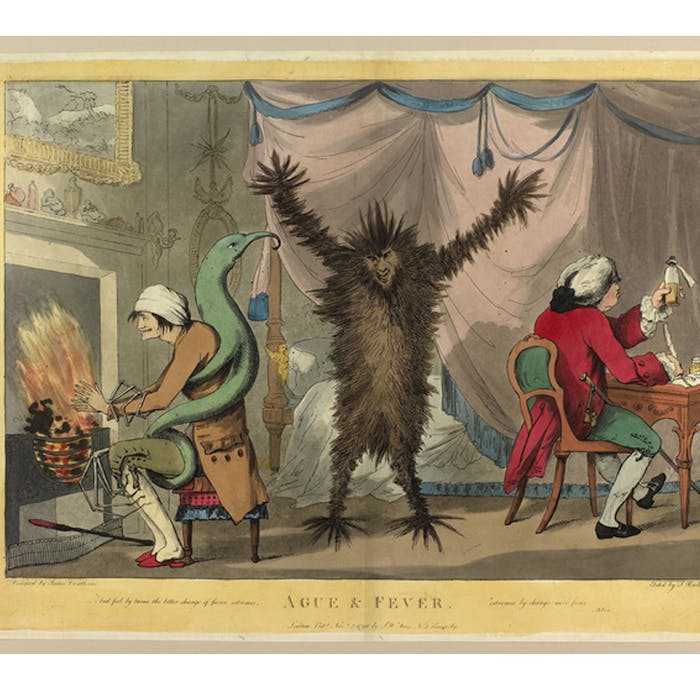
The Ague - when Malaria brought fear to England
Malaria is now regarded as a tropical disease, but it was once endemic in England - known as 'the ague'. Its occurences brought fear and panic, as can be seen in this satirical print from 1788. It was not known at the time that mosquitoes were the vector of the disease.
Whilst the causes of the ague were not understood, it was certainly appreciated that marshy areas were unhealthy and riddled with the disease.
The Fens, low lying country in Somerset, the Ribble district of Lancashire and the marshes of Lambeth and Westminster in London, and the Thames estuary downstream, were badly affected. The Romney Marsh area of Kent was notorious for the disease in the Elizabethan era, with very high mortality rates. Clergymen were reluctant to serve in the area, and generally lived outside it – commuting in to conduct services.
The disease faded as the climate changed and got colder during the Little Ice Age. Subsequent improved drainage and better housing also helped to reduce the British mosquito population.
Apart from a few cases when malaria was reimported, for example a local epidemic on the Isle of Sheppey after the return of soldiers during World War I, the disease had disappeared from the UK by the beginning of the 20th century. There is, however, concern that global warming, increased movement of people, and ecological initiatives to expand wetland areas in Britain could allow the disease to return.
Further reading
Links to external websites are not maintained by Bite Sized Britain. They are provided to give users access to additional information. Bite Sized Britain is not responsible for the content of these external websites.
